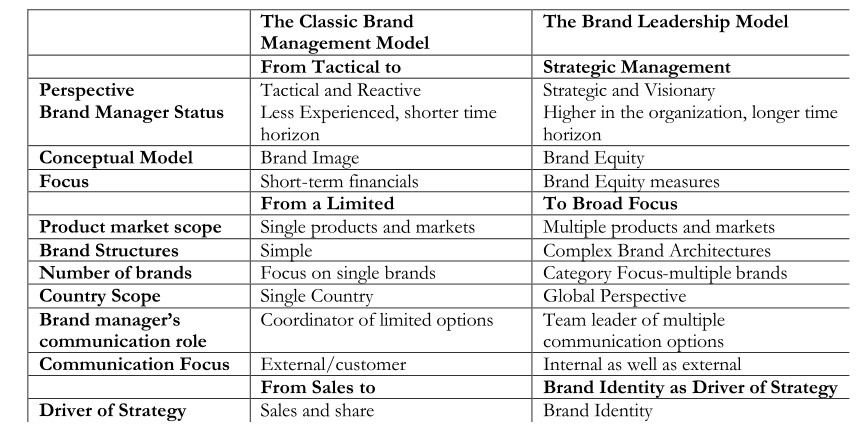Firms have a variety of options available to them with respect to branding strategy, which refers to the nature and number of common and distinctive branding elements that can be applied to the products and services sold. Branding strategy is important as a means of enabling consumers to understand and connect with the brand, since it can help consumers organize a company’s products and services in their minds. This chapter introduces the concepts of the brand-product matrix and the brand hierarchy, two tools that can help a company make decisions regarding branding strategy.
The brand-product matrix is a graphical representation of all the products sold by a firm. Each row of the matrix is labeled with a brand name, while each column represents a product. Thus, the rows of the matrix correspond to brand lines (all the products sold under a particular brand name) while the columns correspond to product lines, a.k.a. brand portfolios, (all the brands marketed in particular product categories). A firm’s branding strategy can be characterized according to its breadth, which refers to the number and nature of products that bear the same brand name, and its depth, which refers to the number and nature of brands in the same product category. Marketers can use the brand-product matrix to determine whether and where to make connections across products and brands.
A brand hierarchy visually illustrates the possible relationships that can be formed among the firm’s products through the selection of common and distinctive brand elements. The levels of the hierarchy might include the corporate or company brand at the top, followed by a family brand used in more than one product category, an individual brand that typically is restricted to one product category, and a modifier that designates a specific item or model. Because a company’s marketing activity may result in different types of associations becoming linked to the brand names at various levels of the hierarchy, each name has the potential to impact the equity of brands at levels above and below it.
The choice of branding strategy depends upon a number of different factors, including corporate objectives and capabilities, consumer behavior, and competitive approaches. Consequently, strategies differ significantly between firms and even across products within firms. In addition to designating the optimal hierarchy, a company must also design marketing support programs that create the desired awareness and associations at each level. In general, associations for a higher-level brand should be relevant to as many brands below it as possible, while brands at the same level should be as differentiated as possible.
Cause marketing provides the following benefits to corporations – building brand awareness, enhancing brand image, establishing brand credibility, evoking brand feelings, creating a sense of brand community, and eliciting brand engagement. The Brand Focus discusses several charitable campaigns in detail, including the Avon Breast Cancer Crusade and the Liz Claiborne Women’s Work campaign against domestic violence, as well as environ- mental or “green” marketing.
The classic brand management system has worked well for many decades for P&G and a host of imitators. It manages the brand and makes things happen by harnessing the work of many. However, it can fall short in dealing with emerging market complexities, competitive pressures, channel dynamics, global forces, and business environments with multiple brands, aggressive brand extensions, and complex sub brand structures.
As a result, a new model is gradually replacing the classic brand management system at P&G and many other firms. The emerging paradigm, which we term the brand leadership model, is very different. As the Figure summarizes, it emphasizes strategy as well as tactics, its scope is broader, and it is driven by brand identity as well as sales.
Brand Leadership – The Evolving Paradigm

From Tactical to Strategic Management
The manager in the brand leadership model is strategic and visionary rather than tactical and reactive. He or she takes control of the brand strategically, setting forth what it should stand for in the eyes of the customer and relevant others and communicating that identity consistently, efficiently, and effectively.
To fill this role, the brand manager must be involved in creating the business strategy as well as implementing it. The brand strategy should be influenced by the business strategy and should reflect the same strategic vision and corporate culture. In addition, the brand identity should not promise what the strategy cannot or will not deliver. There is nothing more wasteful and damaging than developing a brand identity or vision based on a strategic imperative that will not get funded. An empty brand promise is worse than no promise at all.
Higher in the Organization
In the classic brand management system, the brand manager was too often a relatively inexperienced person who rarely stayed in the job more than two to three years. The strategic perspective calls for the brand manager to be higher in the organization, with a longer-term job horizon; in the brand leadership model, he or she is often the top marketing professional in the organization. For organizations where there is marketing talent at the top, the brand manager can be and often is the CEO.

